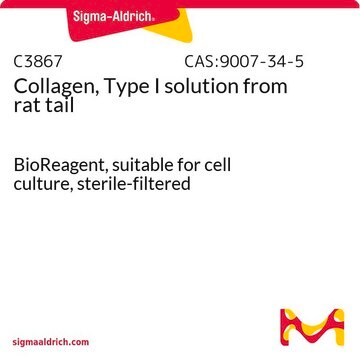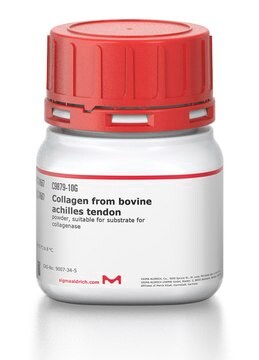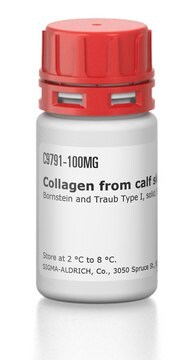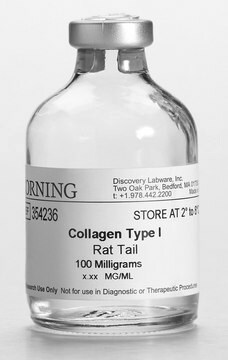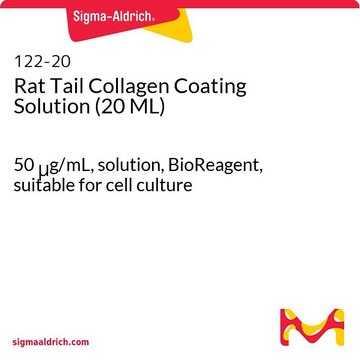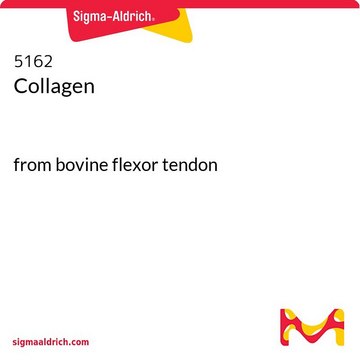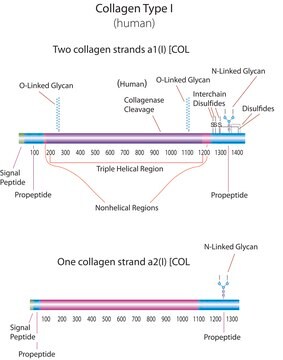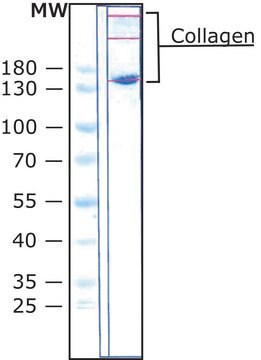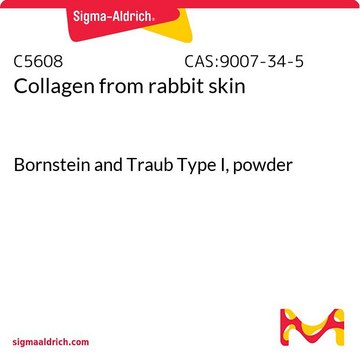C7661
Rat Collagen Type I
from rat tail, powder, suitable for cell culture
About This Item
Prodotti consigliati
Nome del prodotto
Collagene, Bornstein and Traub Type I, powder, BioReagent, suitable for cell culture
Origine biologica
rat tail
Livello qualitativo
Nome Commerciale
BioReagent
Stato
powder
PM
120—160 kDa
Confezionamento
glass bottle of 5 mg
tecniche
cell culture | mammalian: suitable
Copertura della superficie
6‑10 μg/cm2
Solubilità
soluble
N° accesso NCBI
N° accesso UniProt
Specificità del legame
Peptide Source: Fibrinogen
Peptide Source: Laminin
Temperatura di conservazione
2-8°C
Informazioni sul gene
rat ... Col1a1(29393)
Cerchi prodotti simili? Visita Guida al confronto tra prodotti
Descrizione generale
Applicazioni
- Immunohistochemistry
- Cellular activity assays
- Used in generation of dorsal root ganglion (DRG) explant cultures
- Used as one of the components during the preparation of the functionalized surface (in NMR setup)
- Used in cell culture (the glass coverslips were coated with nanowires at high concentrations mixed with collagen)
- Used for biofunctionalization of the microchannels
Azioni biochim/fisiol
Nota sulla preparazione
Altre note
Codice della classe di stoccaggio
11 - Combustible Solids
Classe di pericolosità dell'acqua (WGK)
WGK 1
Punto d’infiammabilità (°F)
Not applicable
Punto d’infiammabilità (°C)
Not applicable
Dispositivi di protezione individuale
Eyeshields, Gloves, type N95 (US)
Scegli una delle versioni più recenti:
Possiedi già questo prodotto?
I documenti relativi ai prodotti acquistati recentemente sono disponibili nell’Archivio dei documenti.
I clienti hanno visto anche
Articoli
Attachment Factors for 3-Dimensional Cell Culture
The extracellular matrix (ECM) is secreted by cells and surrounds them in tissues.
Cancer stem cell media, spheroid plates and cancer stem cell markers to culture and characterize CSC populations.
Extracellular matrix proteins such as laminin, collagen, and fibronectin can be used as cell attachment substrates in cell culture.
Il team dei nostri ricercatori vanta grande esperienza in tutte le aree della ricerca quali Life Science, scienza dei materiali, sintesi chimica, cromatografia, discipline analitiche, ecc..
Contatta l'Assistenza Tecnica.